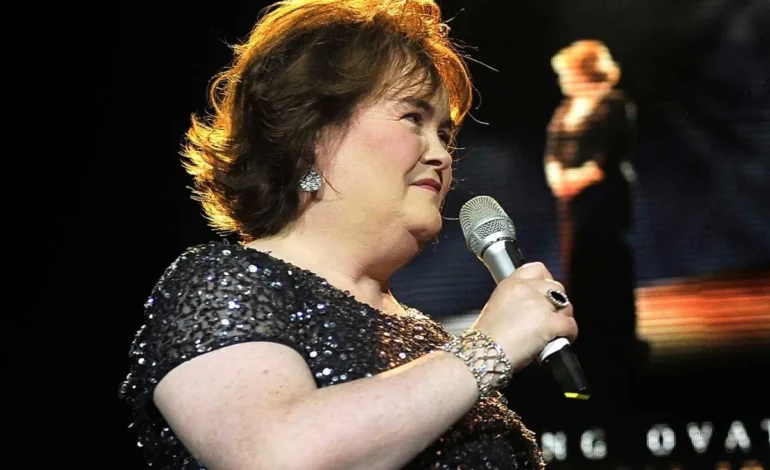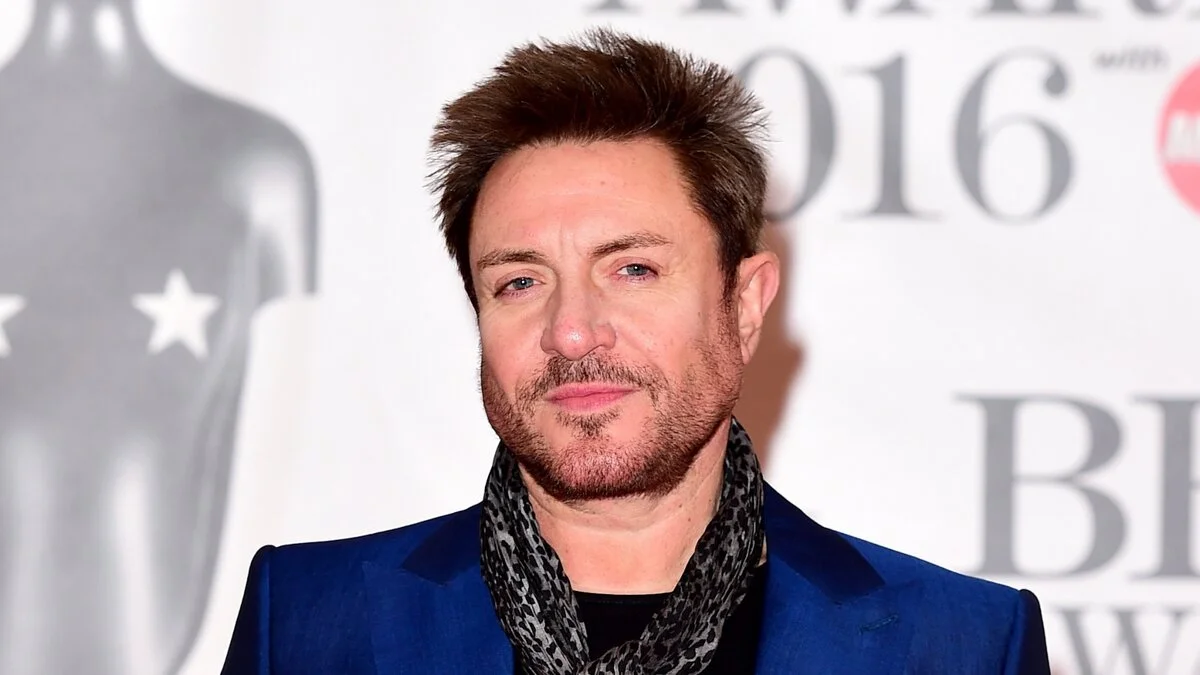The Financial Success of Susan Boyle: How She Became a Star

If you’ve ever watched that jaw-dropping moment when Susan Boyle stunned the world on “Britain’s Got Talent,” you already know she’s special. But here’s what most people don’t know—Susan didn’t just walk off that stage with applause ringing in her ears. She walked into a multi-million-dollar music career that completely changed her life. We’re talking global fame, chart-topping albums, and a financial journey that most never expected from a once-dismissed underdog.
People are curious. How does someone go from a quiet Scottish town to international tours, platinum records, and an estimated net worth of $40 million? And more importantly—how did she make her money, and where does it all go?
This isn’t just another “rags-to-riches” story with glitter on top. It’s a deep dive into the real numbers behind Susan Boyle’s earnings. We’re talking album revenue, performance income, ongoing streaming royalties—you name it. If you’ve ever wondered how a single audition reshaped a life financially, stay locked in. This is where talent meets smart business (whether by design or instinct).
Introduction To Susan Boyle’s Financial Success
When Susan Boyle walked onto the stage of “Britain’s Got Talent” in 2009, few expected what came next. A shy woman with humble roots, an unpolished appearance, and zero signs of industry grooming, she opened her mouth and the world stopped. Her rendition of “I Dreamed a Dream” didn’t just earn her a standing ovation—it ignited a global firestorm of interest.
Suddenly, she wasn’t Susan from Blackburn anymore. She was the voice that gave millions goosebumps across continents. What set this apart was how fast it all escalated. Her performance went viral before “viral” was even a household term. One audition clip collected over 120 million YouTube views by the end of the year—and that was just the beginning.
People were hooked not just by her voice, but by the contrast: someone so ordinary delivering something so extraordinary. And that relatability played into her continued fame. Unlike most celebrities, Susan didn’t morph into a flashy public figure. She stayed grounded. Still lived in her modest family home. Bought modest clothing. No drama, no scandals—just talent that translated directly into commercial success.
All of which is to say—her financial story has massive appeal. Because it breaks the stereotype. It’s not about hype—it’s about impact. Now let’s get into how those vocal cords turned into serious coin.
Susan Boyle’s Biographical Review
Before the world knew her name, Susan Boyle was simply the youngest of nine children growing up in Blackburn, West Lothian, Scotland. Her beginnings were modest. Her father worked as a miner; her mother was a shorthand typist. Money was tight, but the Boyle household ran strong on family values and community roots.
Susan showed signs of musical talent early on. After school, she studied at Edinburgh Acting School and took singing lessons, even entering local competitions. But despite her dedication, she never really broke through in a big way—for decades.
Everything turned upside down in 2009. When she stepped onto the stage for her “Britain’s Got Talent” audition, there was laughter in the room. People judged the package before hearing the performance. Then, she sang “I Dreamed a Dream,” and that moment rewrote her story. Judges were floored. The audience went from skeptical to stunned in under two minutes. And viewers across the world couldn’t get enough.
That viral clip flipped the switch. Suddenly, record labels wanted in. TV shows invited her. Fans mobbed her public appearances. Almost overnight, she transformed from unknown to international star. The buzz wasn’t just local or regional. It was global. Europe, North America, Asia—her fanbase spanned borders.
Notably, Susan kept her authenticity throughout this whipped-fire rise. No plastic persona, no social media stunts. Just raw talent, humility, and a voice that never needed autotune. That combo gave her not just fame—but staying power.
- Early struggles grounded her perspective
- Viral stardom happened nearly overnight
- She remained true to herself, avoiding flashy fame traps
Analyzing Susan Boyle’s Earnings
Look, let’s not sugarcoat this. Susan Boyle didn’t just “make it”—she crushed it. From someone who once struggled to land local gigs, she turned into an artist with a net worth estimated at around $40 million. And she didn’t do it through gimmicks or acting roles or side hustles. It was pure vocal talent backed by strong business structure.
Right after her BGT performance, music execs moved fast. Her debut studio album, “I Dreamed a Dream,” released in late 2009, became the best-selling debut in UK history. Worldwide? Over 10 million copies sold. Boom. She was officially in a different financial league.
But it didn’t stop there:
| Year | Album Title | Estimated Sales |
|---|---|---|
| 2009 | I Dreamed a Dream | 10+ million |
| 2010 | The Gift | 3+ million |
| 2011 | Someone to Watch Over Me | 2+ million |
Year after year, album after album, income kept stacking. Licensing deals, streaming royalties, and concert appearances added recurring revenue on top of the upfront millions from record sales. Her financial trajectory was steady—building instead of bursting.
Here’s the kicker: she kept the overhead low. Susan still lives in her childhood home. Her wardrobe’s humble. She’s not flying private or snapping yacht selfies. That kind of financial discipline means most of her earnings stayed put—growing, compounding.
The upshot? Susan’s not just a success story. She’s a case study in how raw talent, humility, and smart management can outpace even the most hyped-up celebrity fortunes.
Susan Boyle’s Primary Income Sources
Let’s break the income down to its core mechanics. Susan’s financial engine has two primary pistons: album sales and music royalties.
First, albums. Her debut? A financial blowout. “I Dreamed a Dream” wasn’t just popular—it exploded commercially, becoming the fastest-selling debut in UK history and topping charts across the globe. That one album alone did heavy lifting for her net worth. But she didn’t stop there.
Follow-up projects like:
- “The Gift” in 2010
- “Someone to Watch Over Me” in 2011
- “Standing Ovation: The Greatest Songs from the Stage” in 2012
These records didn’t all hit original debut levels, but they sold millions collectively. Over the course of her career, Susan’s total record sales have topped 25 million worldwide.
Then there’s the royalty stream. Every time someone listens to “I Dreamed a Dream” on Spotify, clicks her YouTube performance, or buys a digital download—those little cents add up. She’s become a fixture on streaming platforms. With millions of streams annually, the royalty checks still roll in consistently.
Add in broadcasting rights, international album distributions, and synchronization deals (where her tracks are used in films or shows), and you’ve got a diversified income base.
The bottom line? Susan Boyle’s not just sitting on past success. Her voice continues to generate income every day—stream by stream, album by album, quietly fueling a multi-million-dollar empire.
Susan Boyle’s Career Highlights & Milestones
It’s easy to forget now, but back in 2009, when Susan Boyle stepped on stage in front of a skeptical “Britain’s Got Talent” audience, nobody expected what came next. Her rendition of “I Dreamed a Dream” from Les Misérables didn’t just stun the judges—it lit a spark that went global. The performance racked up over 120 million YouTube views in the same year, turning her into a household name overnight.
Recognition followed quickly. In 2010, Boyle earned three Guinness World Records: Fastest-selling debut album in the UK, Most albums sold by a female artist in the first week, and the Oldest artist to top the US and UK charts with a first album. Add to that two Grammy nominations and seven award wins from 16 nominations—this wasn’t a one-hit-wonder moment.
From there, her album career rolled out like a well-scored soundtrack. Her debut, also titled “I Dreamed a Dream”, sold over 10 million copies globally. Next came albums like “The Gift,” “Someone to Watch Over Me,” and “Standing Ovation”, each one reinforcing her status as a serious vocal powerhouse. While each release sparked its own conversations, one truth remained—Boyle had staying power.
But Boyle wasn’t just a studio artist. Her live performances played a major role in defining her as a true performer. The 2019 “Ten” tour marked a decade in the spotlight and brought her voice to audiences nationwide. That tour wasn’t just a celebration of her longevity—it was proof that fans still showed up in droves to hear her sing. Whether it was arena stages or television appearances, Boyle’s milestones kept adding up in a career carved on her own terms.
Susan Boyle’s Performance Earnings
Behind every note she sang onstage was a business engine ticking underneath. Live performances were more than just fan service—they were a major part of Susan Boyle’s net worth. Over the years, she headlined multiple concert tours where ticket sales, merchandise, and media rights generated consistent income.
When she took that 2019 “Ten” tour on the road, tickets sold fast, especially across the UK. Fans who followed her journey from the start filled venues, and the tour grossed millions in earnings. While she’s known for her angelic vocals, these shows quietly delivered a significant portion of her income.
And it wasn’t just domestic attention. International events brought Boyle to new audiences—packing theaters in the US, Australia, and other key markets. Every overseas performance added to her financial footprint, especially with VIP packages and international streaming boosts that followed each stop. These appearances weren’t only sought after by fans—they’ve been a core vehicle for sustaining Boyle’s wealth over time.
Susan Boyle’s Record Deals and Contracts
Before she ever held a platinum plaque, Susan Boyle signed one of the most high-profile recording contracts of her generation. Shortly after her breakout performance on “Britain’s Got Talent,” she landed a multi-album deal with Syco Entertainment, Simon Cowell’s label. That deal marked the beginning of a global music career with room to grow.
Cowell himself was vocal about Boyle’s talent, and so the partnership was built with long-term success in mind. Her debut album under Syco—“I Dreamed a Dream”—launched to massive acclaim and sales figures that shattered expectations. That first week saw record-breaking sales both in the UK and the US, setting the tone for several albums to follow.
Music industry insiders credit her deals with Sony Music and Syco for giving her the infrastructure to scale. Distribution, marketing, and international licensing allowed Boyle’s music to reach well beyond British island shores, giving her staying power in an industry known for quick fades. And it didn’t stop with original albums.
Reproduction rights like YouTube streams, TV licensing, and use of her songs in media franchises meant that her presence—and earnings—kept flowing, even when she wasn’t actively recording. As her catalog grew, so too did the royalty streams. The structure of her contracts ensured that her financial benefits outlasted album drops, creating long-term sources of wealth tied to her voice and persona.
Susan Boyle’s Financial Legacy and Wealth Accumulation
From instant fame to a net worth now clocking in at roughly $40 million, Susan Boyle’s money story isn’t just about success—it’s about sustainability. She didn’t fizzle after her 15 minutes; she built a career that spanned more than a decade and kept delivering value both emotionally and financially.
So how did she turn viral buzz into long-term wealth? It wasn’t just album sales. Susan leveraged smart tour planning, strategic record deals, and digital royalties to keep her income streams diversified. And while many artists drift from the public eye, Boyle’s ability to stay quietly consistent kept the engine running. Every Spotify stream, every YouTube view, every televised performance—that all added up.
But maybe the most unique thing about Boyle is how she managed her millions. While her peers snapped up villas and luxury cars, Boyle chose to live in her modest childhood home in Blackburn. She didn’t live to impress on social media. She stayed grounded, chose personal fulfillment over flashy spending, and invested back into projects that mattered.
Let’s break it down:
- She kept her lifestyle humble.
- Boyle prioritized long-term album planning, studio sessions, and marketing that extended her brand.
- Her earnings didn’t just come once—they came often, thanks to streaming and television rights.
- She was known to work with trusted advisors who helped preserve and grow her portfolio.
Susan Boyle’s net worth isn’t a fluke. It’s a layered story of talent, timing, and grounded decision-making. She turned a viral moment into long-term prosperity—without losing sight of who she was before the cameras showed up.
Susan Boyle’s Investment Portfolio
Ever wonder how someone can earn millions and not blow it all? Susan Boyle’s net worth didn’t just balloon because she sold millions of albums. It grew because she didn’t jump on the mansion-buying, sports-car-collecting celebrity bandwagon. She played it smart.
After her rise to stardom in 2009, Susan kept her head down and her wallet closed. While many artists went big, she stayed rooted—literally—living in her modest childhood home. Her choices show us something powerful: discipline is underrated.
She may not flaunt an investment portfolio in interviews, but signs point to a low-risk, steady-returns financial strategy. Sources suggest she’s worked closely with financial advisors to ensure her earnings are managed carefully. Real estate, royalties, and diversified savings—these likely form the backbone of her finances.
What’s fascinating is that Boyle seems more committed to sustainability than flash. Her income from streaming services like Spotify and YouTube provides recurring inflows. Add in licensing and merchandise rights, and you’ve got layers of revenue.
This isn’t just a story of rags to riches. It’s a masterclass in how modest spending and strong financial management can turn $100 into $1,000—and keep it growing.
Susan Boyle’s Fortune Timeline
When Susan Boyle stepped onto the Britain’s Got Talent stage in 2009, few would’ve guessed they were watching the launch of a future multi-millionaire’s career. But that’s exactly what happened. Her breakout performance of “I Dreamed a Dream” went viral and catapulted her into global fame—and serious financial success.
From that single televised moment, her life changed economically. Her debut album shattered records, reaching over 10 million global sales. That album alone contributed significantly to her fortune and set the tone for what was to come. Between albums, touring, and media appearances, revenue started to flood in.
Here’s how the key milestones shaped her net worth:
- 2009: Britain’s Got Talent debut, debut album launches, immediate multi-million dollar earnings.
- 2010-2012: Follow-up albums like “The Gift” topped UK and US charts. She became a household name.
- 2013-2019: Continued album sales, successful performances, and her 10-year anniversary tour “Ten” added fresh momentum.
- 2020-2024: Royalties, streaming revenue, and nostalgic fan support contribute to incremental net worth growth.
But here’s the kicker: She didn’t overspend or overextend. Instead, her music did the heavy lifting. Streaming platforms turned legacy fans into ongoing revenue, and licensing rights kept cash flowing behind the scenes.
She didn’t just get lucky—she leveraged one viral moment into a financial engine that still runs in the background. And that kind of consistent growth? That’s rare in entertainment.
Susan Boyle’s Place in the Celebrity Earnings Landscape
Let’s compare. Big names like Taylor Swift or Adele have topping-the-charts net worths. But Susan Boyle? She’s sitting on a cool $40 million—and that wasn’t built off endorsements or brand deals. It came from raw talent and staying power.
Which leads to one truth: Boyle punched way above her weight.
Unlike many entertainers who flame out after one big break, she held her ground. No gimmicks, no failed fashion lines—just music. And that alone put her in the upper bracket of wealth among reality-TV-born stars.
What makes Susan stand apart is how she smashed every stereotype in the game. She was in her late 40s, from a small Scottish town, and didn’t fit Hollywood’s mold. Yet she proved that talent sells—authentic, goosebumps-down-your-spine talent.
Most celebrities spike fast and fade out faster. But Susan built a slow-burning career with consistent financial yield. This is what the business world would call “a high ROI with low volatility.”
Here’s what any artist or entrepreneur should take away from her story:
- Play the long game: One viral moment doesn’t mean one-time income.
- Simplify systems: Keep your lifestyle lean to stretch your income.
- Monetize legacy: Albums, streaming, and shows become income layers over time.
Susan Boyle isn’t held up as an example of flashy wealth, but she should be. She outpaced expectations, maintained control, and built a business on her own terms. In a world bent on fast fame, she reminds us that slow, consistent growth wins the game.
Conclusion: The Financial Journey of Susan Boyle
Let’s recap. Susan Boyle started out as the unlikeliest star you could imagine. But from her first audition to building a $40 million net worth, she’s turned every doubter into a believer.
The real takeaway? It’s not just that she’s rich. It’s how she got there—by staying grounded, focusing on her craft, and managing her wealth with laser precision.
In music, impact matters more than headlines. And Susan’s impact is undeniable. She gave people goosebumps, inspired millions, and made choices that turned short-term fame into long-term value.
If you’re a fan, keep hitting play. Every stream, every ticket, every download—it plays a role in keeping her story alive. If you’re an aspiring artist, study her moves. This is how legacy is built: slow, steady, and smart.
Susan Boyle isn’t just another chart-topper. She’s proof that success doesn’t have to be loud—it just has to last.





